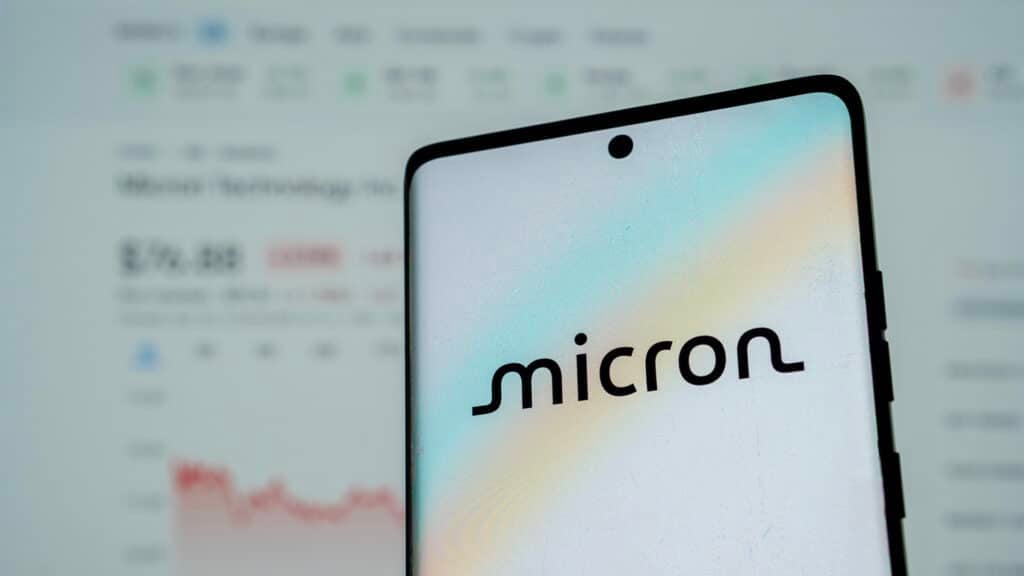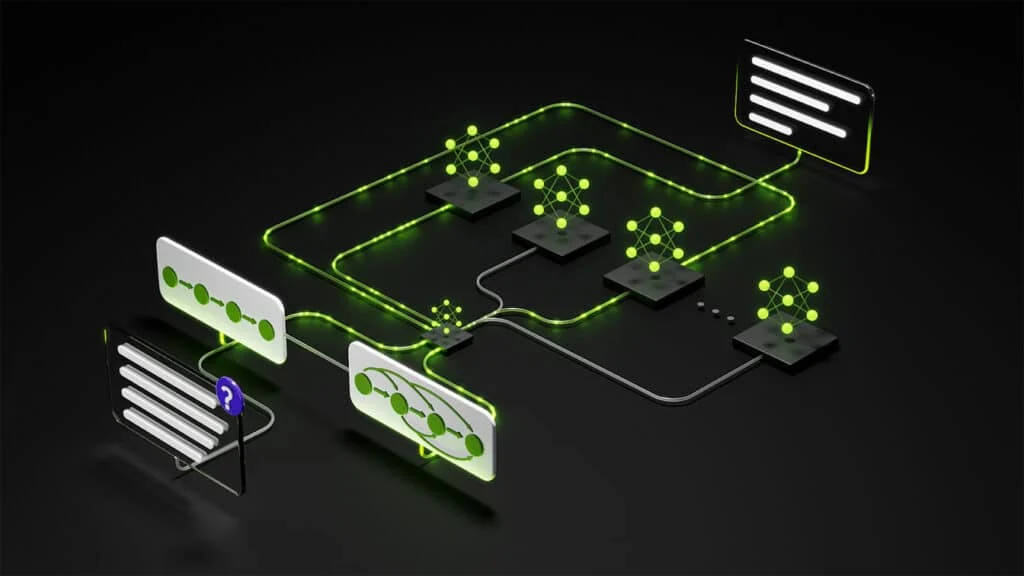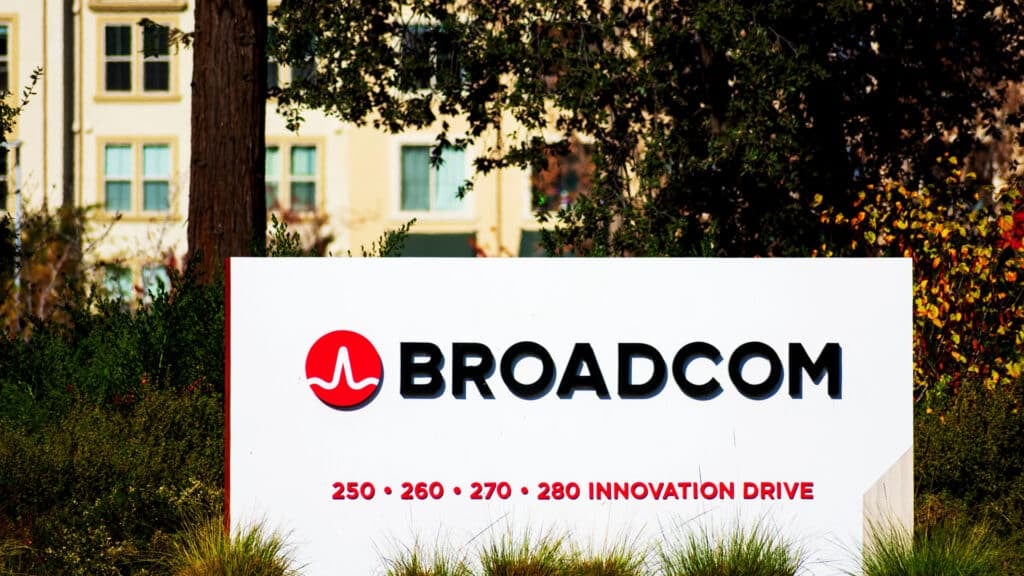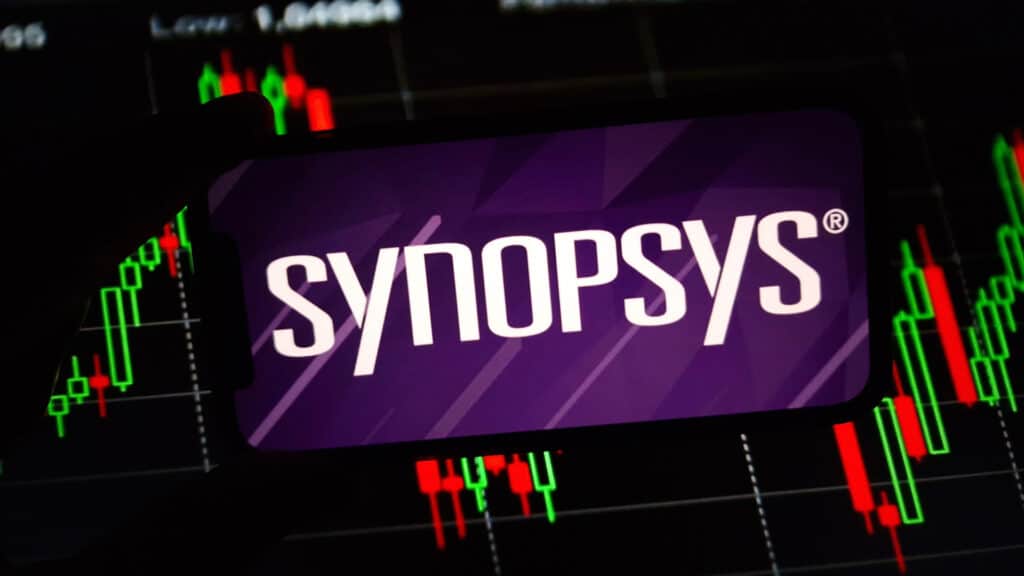On this episode of The Six Five – Insider, hosts Daniel Newman and Patrick Moorhead welcome Stu Pann, Senior Vice President and General Manager, Intel Foundry Services (IFS) at Intel for a conversation about the investment and innovation happening at IFS.
Their discussion covers:
- Why Intel is pursuing the foundry services business
- An overview of IFS, what their offerings are, and what makes them stand out from the competition
- The latest on the CHIPS Act funding and other incentives
Be sure to subscribe to The Six Five Webcast, so you never miss an episode.
Watch the video here:
Or Listen to the full audio here:
Disclaimer: The Six Five webcast is for information and entertainment purposes only. Over the course of this webcast, we may talk about companies that are publicly traded, and we may even reference that fact and their equity share price, but please do not take anything that we say as a recommendation about what you should do with your investment dollars. We are not investment advisors, and we ask that you do not treat us as such.
Transcript:
Patrick Moorhead: And we are back for another Six Five Insider. I’m here with my bestie, Daniel Newman, and we are talking about one of our favorite topics, and that is semiconductors. Daniel, how are you doing, my friend?
Daniel Newman: Doing well. I always feel like for the rest of twenty-four, it needs to be an AI joke. We’re going to be talking about what everyone is talking about and then we’ll say something like, customer experience solutions and collaboration. And you just totally go off the beat here. But no, I mean, it’s good to be back. It is a big year of AI, Pat, but I don’t know, but AI requires some serious manufacturing and I think we’ve got a good one today.
Patrick Moorhead: Yeah, we do. Whether it’s design, whether it’s manufacturing, this incredible desire for more CPUs, more GPUs, more anything Pus. IPUs, I mean, AI and the amount of data is just creating this huge opportunity. And yes, manufacturing foundry services, either an IDM or foundry services are a key part to this. And as we found over the last couple of years, the lack of competition and the lack of choices that these customers have have a huge impact. And it’s my pleasure to introduce Stu Pann, who runs Intel’s IFS operations, Intel Foundry Services. Stu, it’s great to see you.
Stu Pann: Great seeing you guys. Glad to be here today and really honored you decided to have me on stage.
Daniel Newman: Yeah, it’s a big thing. And Stu, Pat and I, this Pat, there’s a little joke by the way, because we talk regularly to your boss, Pat Gelsinger, and it’s Big Pat, Little Pat, and it’s always very funny to listen to the interaction. But this Pat, Little Pat and I have actually been saying for some time how important it is that we see more manufacturing here in the States, that we see more competition, more collaboration in the West, that we protect the fact that defense technology leadership, that the supply chain, we all felt the effects over the last few years that we get these things resolved. And it seems like you’ve been put into the role at Intel in helping proliferate this ambition that we all share, and I know Big Pat shares as well. So why don’t we start there ahead of the business, why is Intel pursuing this particular space, the foundry space?
Stu Pann: Well, I think there’s a couple of reasons. One, we believe we need to be in the foundry business for scale. This is a scale business. It requires a lot of capital, a lot of factory, a lot of people. And only by being in the foundry business and offering up our technology to other people, can we really get the scale and the business we need? It’s not to say our PC business isn’t good, our server business isn’t good, they’re both really good, but to really compete with the size and the scale of a TSMC, you have to be in the foundry business. So we’ve come to that conclusion. We’re making huge investments around the world. Just in the US alone over the next several years, we plan to invest over $100 billion, but we’re making investments in Europe, in Asia, and we’re bringing this to life. And I think as you guys led off earlier, AI is something that’s really, I think generated a remarkable tailwind for our business.
Look back to January of last year, nobody could spell AI in their forecast, really at the level we’re seeing it now. And so the industry I think is responding to that. But yeah, I got to give Big Pat a lot of credit in this because we made these decisions to invest in these factories when he came on board. And there’s this old quote from Louis Pasteur that says, “Chance favors a prepared mind.” I think Pat has really got the company prepared for this wave of silicon consumption driven by AI. And I think when you look at where we’re at with process technology, packaging technology, connectivity fabrics, some of the ways we were able to help our customers implement systems, we are actually, I think we’re made for AI and for what’s about to happen so we couldn’t be more excited about our potential in this business and about our potential to really be the number two foundry player by the end of this decade.
Patrick Moorhead: Yeah, I think Pat was in the helm maybe 30 days and your IDM 2.0 strategy got rolled out and that was a combination of Intel not only working with external foundry partners even more because Intel had worked with them for years, but also doubling down and creating IFS. And where I was then and where I am today, my first metric is always five nodes in four years, which I know we’re going to talk about a little bit later, which you’re hitting, but also it becoming a packaging game as well and those are two parts, the wafers and the packaging. And I’m curious, what is it specifically that you’re offering and how’s it different? I mean, I would say there’s two and a half options right now out there, but what are you doing and how’s it different?
Stu Pann: Well, I think there’s a couple of really important things that are packaging strategy. One, we came into the strategy by providing substrates and standard assembly tests to a couple of folks last year, including Cisco and AWS. What we found as we did this is people are incredibly interested in what we’re willing to do in packaging, given that we’re willing to monetize every aspect of what we do there. So for example, you also have a very big server business. We do a lot of packaging technology called EMIB, which allows for very low cost connection between die. But we’re doing a lot of packaging work with Foveros, which is the foundation for Meteor Lake. And we’re going to go way beyond that and talk about how do you create an AI subsystem of the future. Because when you think about the amount of silicon consumed by AI, it can’t be a monolithic device forever. It’s going to be disaggregated. You’re going to need a base die, you’re going to need logic tiles, and you’re going to need very big packages.
And so our customers see what we’re able to do in our own product line. They know we’re credible. We then debug our commercials with these customers by showing them we can be a great foundry supplier through advanced packaging. And then we evolve into lithography. So as we come into our Foundry day, which I’m hopeful you both can attend on February 21st, we’ll actually present a five-year roadmap of what we’re doing in packaging, everything from where we’re at today to what the future looks like five years from now. Because clearly we have to move to a new substrate material. Organic is not going to be sufficient for these very large devices. Clearly, we’re going to have to find a way to think about photonics and optics, and clearly we’re going to have to really master the art of stacking die on top of each other. So it’s a great way to get started with us and it complements our process technology.
Patrick Moorhead: Yeah, it’s so ironic the way I think Stu, you and I met almost 25 years ago, or sorry, almost 30 years ago. And back then packaging was kind of an afterthought. I mean, designers, hey, let’s throw it over the wall. Let’s get this wafer going and we need to put some stuff together. There’s nobody in industry that I’m aware of on the design side who doesn’t know that packaging is going to be a first order citizen to wafer technologies and that all the way back to these distributed designs, getting the right silicon put on the right process, and then it has to be aggregated in a way that is still very high performance and low power and as low as cost as it can be. So, my, have things changed.
Stu Pann: They have. It’s funny, I just reflected when you and I first met each other back when you were in Houston at Compaq, if you think about that time, PCIe was just coming around as a high speed standard bus architecture. And now sitting here today we have UCIe. So instead of a systems bus on a PC, we’re creating a systems bus inside of a package. And just like you mixed and matched different components inside a PC or different suppliers, we are now going to mix and match different chiplets inside of a package. We’re working closely with TSMC, we’re working closely with Samsung, we’re working with the IP providers to create a standard UCIe set of IP so we can easily communicate back and forth.We demoed this a few months ago.
We’re going to talk more about it at Foundry Day, but it’s super exciting because it opens up this vast world of mix and match technologies inside of a single device. If you think about automotive, which Mercedes is promoting UCIe as a standard for automotive, you think about what the defense industrial base needs to be able to mix and match different technologies there. This opens a whole new world of applications.
Patrick Moorhead: Yeah, I think it’s going to drive a whole new level of innovation, which says you have a designer who used to have to complete an entire chip, and if they would do a UCIe chiplet, put it in your process, have somebody help get design, put it on there. So anyways, yeah, I’m excited about packaging and of course wafer, wafers too.
Daniel Newman: Well, I mean-
Stu Pann: Packaging in some ways… Just one final thought on that. There’s a old saying orange is the new black, packaging is the new litho. But interestingly enough, Gordon Moore predicted this in his original paper in 1965.
Patrick Moorhead: Interesting.
Stu Pann: The next to last paragraph said at some point we’re going to have to look at combining different devices inside of packaging. So not only did Gordon create Moore’s law, but he also was prescient enough to know that this thing too will come about. So it’s fascinating to see it fast-forward to this moment in time and see it come to life.
Daniel Newman: Yeah, so it sounds like the packaging capabilities are really a differentiator. And as I’ve listened to Pat Gelsinger over the last few quarters in earnings, because by the way, IFS has been a bright spot, like a substantial standout in your last few, where some other parts of the business on year over year, even though Intel’s had a good year, I think your stock’s up 100% almost from the low, which is again, it was really low. So it’s high, and that’s not what we’re tracking, but it’s always a good thing when the market starts to reward good operations, execution behavior. But the long and short is, I kind of remember each quarter as he’s talked about why IFS has done so well. He does really talk about the packaging and the packaging wins and the customers that are coming in for that.
And of course Pat Moorehead, to your point about the design and integration, I mean, we are seeing the amount of investment dollars that are going towards, of course the actual ability to assembly and do packaging at the foundry level. But even the recent Synopsis and Ansys deal, you’re seeing big dollars pouring into fully integrated systems solutions, software design, and IP. So this whole thing being driven by AI is really pretty prophetic and prolific. And Gordon was clearly seeing the future 60 years ago. Pat, what were you like, 10? Pat Moorehead you were like 10?
Patrick Moorhead: Wasn’t born, fans.
Daniel Newman: Come on, come on.
Stu Pann: I was, of course.
Daniel Newman: I never miss an age joke. I never miss a chance to do an age joke. But just a little bit with packaging being so much the talk, where are you at with process versus packaging as it pertains to where IFS is at?
Stu Pann: Well, I’m really excited to report a couple of things. One, we have now taped in our first 18A product for Intel’s own use for our server product line. So that’s now in the factory running. And I think that actually demonstrates our progress against Pat’s strategy of five nodes in four years, which is where we started this conversation. Two and a half years ago when we started down this path, well, most people thought, “That’s an incredible amount of change. There is no way Intel can pull that off.” Sitting here today with the fact that this is running in the factory, we are now demonstrating five nodes in four years. Intel 20A with Arrow Lake is being sampled, Meteor Lake is being built in the millions of units, that’s Intel 4. Granite Rapids is sampling, that’s Intel 3. And of course we’ve been running on 10 nanometer for a while. So we’re super proud of the fact we’ve been able to accomplish what we set out to do.
But there’ll be more on all of this, and we’ll talk more about that in a Foundry Day. And I think the other thing that’s interesting is in this business, silicon truly speaks. And so one of the ways that we measure are we making progress with our customers is the amount of test chips we’re running the factory. So today, if you look at the 50-some-odd test chips we’re running for our customers, 75% of them are 18A. And that’s due to the work we started out a while ago with the US government on RAMP-C, which allowed our customers take early versions of the PDK and start taping US test chips. So when I look and see where we’re at, I look at the number of test chips we’re running, and that really represents a serious commitment by our customers to take their precious design engineering resources and try us out and see, is our silicon performing as expected? And by the way, at Foundry Day, we’re poised to give our customers our community an update and just how well 18A is turning out
Patrick Moorhead: We’ve seen a couple public announcements about customers, potential customers, then we’ve seen some announcements on customers without a name. But what can you say right now about customers, let’s say on the wafer side and then on the packaging side? Even if it’s just a number of customers, that would be helpful. I think some people look at the abstract of when Intel gets there and if they get customers. They have customers, folks.
Stu Pann: We have customers including one that did a significant prepay last quarter. As Pat talked about in an earnings call, we added another significant customer on 18A. The issue we face is in the foundry business, and you guys know this from talking to TSMC, they never say anything about who their customers are. And I think that’s a behavior practice in the industry that’s pretty standard, and we are going to follow that. I will tell you, we have won a foundry services agreement with the US government and the DOD this past quarter. That our lifetime value, something that Pat talked about this summer, we said was roughly about $4 billion, it’s more than doubled to 10. And we’re fairly conservative in our estimates, because we’re talking to the investment community about where we’re at, but we have more than doubled our lifetime deal value since the summertime.
Patrick Moorhead: So that does kind of beg the question, when should we expect to start to see things happening in relation to volume manufacturing? We’ve seen PDKs come out, you are doing packaging currently right now for customers, but when do we see the high volume, the big burst? And I would guess that it has to be, it’s correlated with the Columbus facility?
Stu Pann: Well, it’s both Columbus and its Arizona. It’ll start with Arizona. So Arizona is, in fact, we put the last roof truss on the factory in Arizona last week.
Patrick Moorhead: Congratulations.
Stu Pann: That’s really what’s being built out. We are running 18A in our development factories in Oregon. But the point that this becomes very big for us is when you go to HVM, high volume manufacturing, and our first 18A HVM factory is in Arizona, and then we’ll follow that obviously with the work we’re doing in Ohio, we haven’t announced what technology is going to go into Ohio, but it’ll be similar advanced lithography. And then you move on to Germany and the factory we’re doing with Magdeburg. So we have that roadmap set up for high volume manufacturing for really the next several years.
Patrick Moorhead: So Stu, there was some really big news between Intel Foundry Services and UMC. Can you give us some of the highlights, or maybe even a double-click, what was the arrangement? Why is it important for both of the companies?
StuPann: Yeah, it’s been a fascinating deal. And the UMC deal actually started out originally with the work we did with Tower several months ago where we took an existing factory in New Mexico where we had people, floor space, and tools. We married that with some of the process technology from Tower, and we’re running a flow for Tower as a contract manufacturer. This deal is one step further. This deal is a collaboration on a new node for both of us, which is a 12 nanometer node, which is in between 14 and 10 as you would expect, but it is a great node for low-cost applications.
And we’ll take that and take the technology and the insight we’ve developed in doing double patterning, we’ll take the expertise of UMC in running low-cost factories, we’ll take their expertise in terms of adding extensions to the process. And for UMC, they get to offer this node in an American-based factory and provide capacity to US based customers. So we’re excited, they’re excited. We’re able to take advantage of our, once again floor space we have in Arizona that we can’t use for the EUV, depreciated tools that we have in place right now, that as we move to EUV, we don’t have the same amount of use for, combine it with their stuff and create a very low-cost manufacturing factory. So it’s competitive, it’s differentiated, and it’s based here in the US.
Patrick Moorhead: That’s a real interesting tie up, and when IDM 2.0 was discussed at IFS, the goal overall was going to be kind of full service. We have bleeding edge, we have leading edge, and we have specialty, and it looks like Tower plus UMC. You’re hitting those more cost-effective, more specialty types of nodes.
Stu Pann: And we’re changing our business model. We’re taking advantage of existing tools and space, and instead of fast forwarding over, we’re actually going to run them because they’re depreciating and they are cost effective. If you think about how TSMC’s economic model works, they do the same thing. They bring a process up and they run it forever. That’s our intent also with these kinds of deals, is to bring these things up and run them for a very long time. So long we keep adding different kinds of capability to it, RF, higher voltage, we’ll be able to keep selling those in the marketplace together.
Daniel Newman: So Stu, you started talking about all the fabs, and that leads me to another topic. We’ve spent some time, we’ve talked to your government affairs leadership. It’s been a very exciting few years working with policy makers. There seems to be consensus across both sides of the aisle to bring more manufacturing on shore and also across the west. Of course, your team is expanding its presence here in the US also in Poland and Israel and other places. But just focusing on the US and the CHIPS Act for a moment, there’s been a lot of positivity and a lot of excitement, but it also kind of got slow, not a lot happened. It seems like things are starting to break. What’s the situation? What’s Intel’s viewpoint on the CHIPS Act? How’s this progressing? Because you’ve made the biggest bets by far as to bringing it back on shore. I know Pat G shared a presentation a few years back that he wants to see more parity in a big way, leading edge, which there’s almost none right now here in the United States.
Stu Pann: Yeah, I think it’s been a fascinating progress, because keep in mind, there’s no blueprint for this. I mean, the last time the US passed an industrial policy legislation to the level of CHIPS Act was back in World War II, I mean, this is the single biggest industrial policy legislation since then. So we’re all learning and relearning how to do these things, and we’re learning with the Commerce Department, which traditionally does not disperse funding. So Secretary Raimondo has built a really strong team with Todd Fisher and the CPO office, but they’ve been doing due diligence. We have submitted four applications, thousands of pages of documentation because they want to make sure that we are thorough in our strategy and they know what we’re executing against, and we’re hopeful that something gets announced soon.
But at the point of this recording, nothing’s been announced, but I think we’re close and we’ll continue to work with them and answer their questions. They have to get very detailed agreements in place to disperse the money. And we’re going through that process right now. But I think Secretary Raimondo has been very supportive. And in fact, in a broadcast not long ago with Jim Cramer, she called Intel the national champion. And we certainly feel that way, and I think we’ll get support equivalent of that, of what she has described as the national champion of semiconductors of the United States.
Patrick Moorhead: That’s great. And again, I’m not looking for an answer to this, but the way that I’m viewing this is versus some other folks who we’re looking at the CHIPS Act, you are not slowing down, because I’ve seen a lot of people who have, and that’s one of the striking differences that I see. Hey, I’d love to end the show by talking about when’s the next time we’re going to see some really big disclosures. I think you had talked about a Foundry Day. I think the official name is IFS Direct. Can you talk a little bit about that?
Stu Pann: Yeah, it’s IFS Direct Connect. It’s February 21st. We are expecting several hundred folks. I certainly hope the two of you can join us. We have some exciting speakers lined up. We’ll announce that speaker roster probably within the next week or so, but I think it’ll be worth your while to attend. We’ll have representation from Arm, from Synopsys, from Cadence, from Siemens, Pat and myself, plan on talking. Ann Kelleher will disclose what’s beyond five nodes in four years, which I think your listeners might be interested in. We’ll have Chun-Li talk about our packaging roadmap about five years. Keyvan Esfarjani will talk about our manufacturing footprint, and we plan also talking a little bit more about our partnership with UMC at that point in time. And so pretty exciting day. And then we close with a luminary speaker, which I think everybody will be intrigued by. Not quite ready to announce that just yet, but I think it will definitely be a good draw.
Daniel Newman: Can’t wait to figure out who that is. Pat, my inbox was empty.
Patrick Moorhead: No, I was going to say, gosh, if Dan gets that, I’m going to be really upset.
Stu Pann: It should not be empty, so as soon as we hang up, I’m going to flood both of your inboxes with invites.
Daniel Newman: All right, well, if I can have that luminary spot, I mean, if you really need it, but all serious-
Patrick Moorhead: I mean, he did go to Davos, so-
Stu Pann: Yeah, he did. I saw him. He had a big over coat and everything.
Daniel Newman: I only spoke couple of times. I only spoke a couple of times.
Stu Pann: Yeah, you definitely look like Davos man in those clips.
Daniel Newman: Oh, by the way, it’s not what you’re wearing here, it’s the boots. Everybody’s got to know that about Davos if you want to go there. It’s the wet snow, the dirty pants. But we’ll talk about that later. Stu, I want to thank you. This is very, very interesting. We’re rooting for you. As analysts, one, we believe in competition. Two, we believe in innovation, and three, silicon will eat the world, and so semiconductors will eat the world. And I’ve said it, I continue to say it, Pat says it. We’ll argue who said it first. But either way, having you here, having you continue to come here and tell us what’s going on at IFS is really important. Thanks for-
Stu Pann: Yeah, happy to hear that. And we’re happy to give you guys a really big menu for semiconductors to eat the world from. So we’re building lots of restaurants right now to go feed that world.
Daniel Newman: Let’s keep chatting about it, Stu, and let’s have you back sometime soon. Thanks so much for joining The Six Five Insider Edition. If you like what you heard, hit that subscribe button. Join us for all of our episodes here on The Six Five. But for this episode, for Patrick, Moore and myself, it’s time to say goodbye. See y’all later.
Author Information
Daniel is the CEO of The Futurum Group. Living his life at the intersection of people and technology, Daniel works with the world’s largest technology brands exploring Digital Transformation and how it is influencing the enterprise.
From the leading edge of AI to global technology policy, Daniel makes the connections between business, people and tech that are required for companies to benefit most from their technology investments. Daniel is a top 5 globally ranked industry analyst and his ideas are regularly cited or shared in television appearances by CNBC, Bloomberg, Wall Street Journal and hundreds of other sites around the world.
A 7x Best-Selling Author including his most recent book “Human/Machine.” Daniel is also a Forbes and MarketWatch (Dow Jones) contributor.
An MBA and Former Graduate Adjunct Faculty, Daniel is an Austin Texas transplant after 40 years in Chicago. His speaking takes him around the world each year as he shares his vision of the role technology will play in our future.












